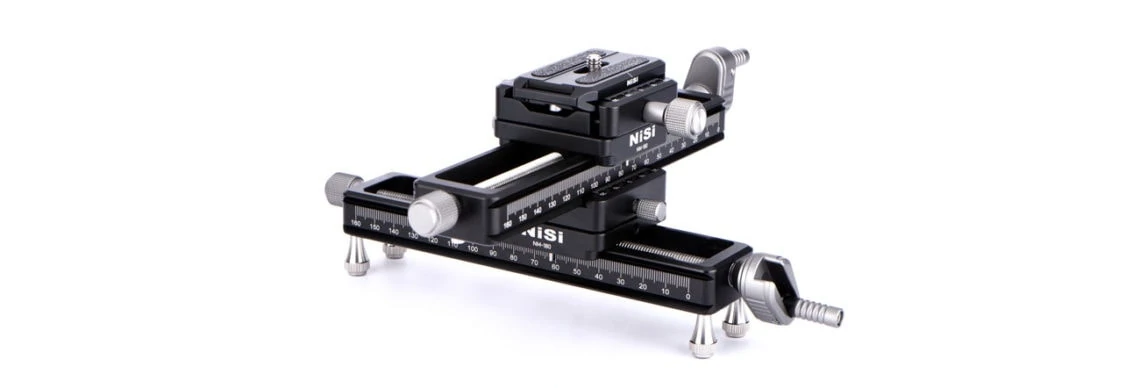The macro focusing rail is a fundamental accessory for macro photography, as it makes it possible to facilitate the focalisation process. It is used to refine the focus by drawing the camera closer and farther away without the need to rotate the lens ring, which would otherwise make the operation very difficult or almost impossible at greater enlargement. The macro focusing rail is part of the big tripod support family, also called “heads”, therefore it can be mounted directly on the tripod (make sure that there is ⅜” and/or ¼” threading). Despite this, very often, they are used over other heads directly, like ball heads, for example.
Having a macro focusing rail over a ball head makes it possible to quickly position it and then refine the distance thanks to a precise movement of the rail itself.
Why use a macro focusing rail
Free handing Macro photography is practically impossible, or at least it is definitely very difficult with magnification close or greater than 1:1. Using a good tripod is fundamental, but the head used is just as important. When we position the camera close to the subject, it is unlikely to be in the perfect condition as, truly, just a handful of mm make the difference in macro photography.

After positioning the tripod, and adjusting the ball head, the macro focusing rail should be mounted, and it should be well secured. This way the distance can be adjusted in a precise manner, and therefore the focus can be exactly where it is needed. Let’s not forget that focus stacking, where using the macro focusing rail is fundamental.
Types of macro focusing rails
There are two main groups in which macro focusing rails are divided:
- 2 directions (either 1 axis or 2 paths)
- 4 directions (either 2 axes or 4 paths)
The difference is fundamental, as simple as it might seem. With the macro focusing rails with 2 paths/directions there is 1 axis in which the camera moves, that is therefore used to draw away from or get closer to the subject. It is the main movement that can be obtained with a NiSi NM-200s Macro focusing rail. When a rail with 4 paths/directions is used, there are 2 movement axes available, and thus it is possible to move the shot sideways or in other directions. With the NiSi NM-200s rail it is easy to have 4 paths available, as it is enough to use a second rail over the first one.

Fundamental characteristics of a macro focusing rail
In addition to the ability to regulate the movement on 1 or 2 axes, there are other fundamental characteristics to keep into consideration when choosing a macro focusing rail.
- The manufacturing quality is very important, the usage of CNC machines makes it possible to obtain a fluid movement and to reduce tolerances. The NiSi rail is engineered and built with the best machinery available.
- The materials used by ultra-cheap rails increases wear and reduces the lifespan of the product, leaving users with no support when it is needed the most. As for all of our aluminium products, we use a high-strength aircraft-grade alloy.
- The ability to use the rail even while it is on a table, with no tripod, for maximum flexibility. The NiSi NM-200s rail has 4 removable “feet”, for tripod-free use.
- The maximum flexibility of use, as is the case for our NM-200s, makes it possible to achieve a 360° rotation of the plate or to use a combination of 2 rails to provide 4 possible directions.
- Price is always important. Quality is never given away for free, but in NiSi’s case you have at your disposal the best quality at the best price thanks to the NiSi model, which ensures your ability to access quality products directly, without any more price increases and with the direct warranty from NiSi.

-
Macro Photography
 Macro Focusing Rail NM-200s
Macro Focusing Rail NM-200s -
Photographic Lenses
 NC Macro Close-Up Lens II 77-72-67mm
NC Macro Close-Up Lens II 77-72-67mm -
Photographic Lenses
 NC Macro Close-Up Lens 58-52-49mm
NC Macro Close-Up Lens 58-52-49mm





